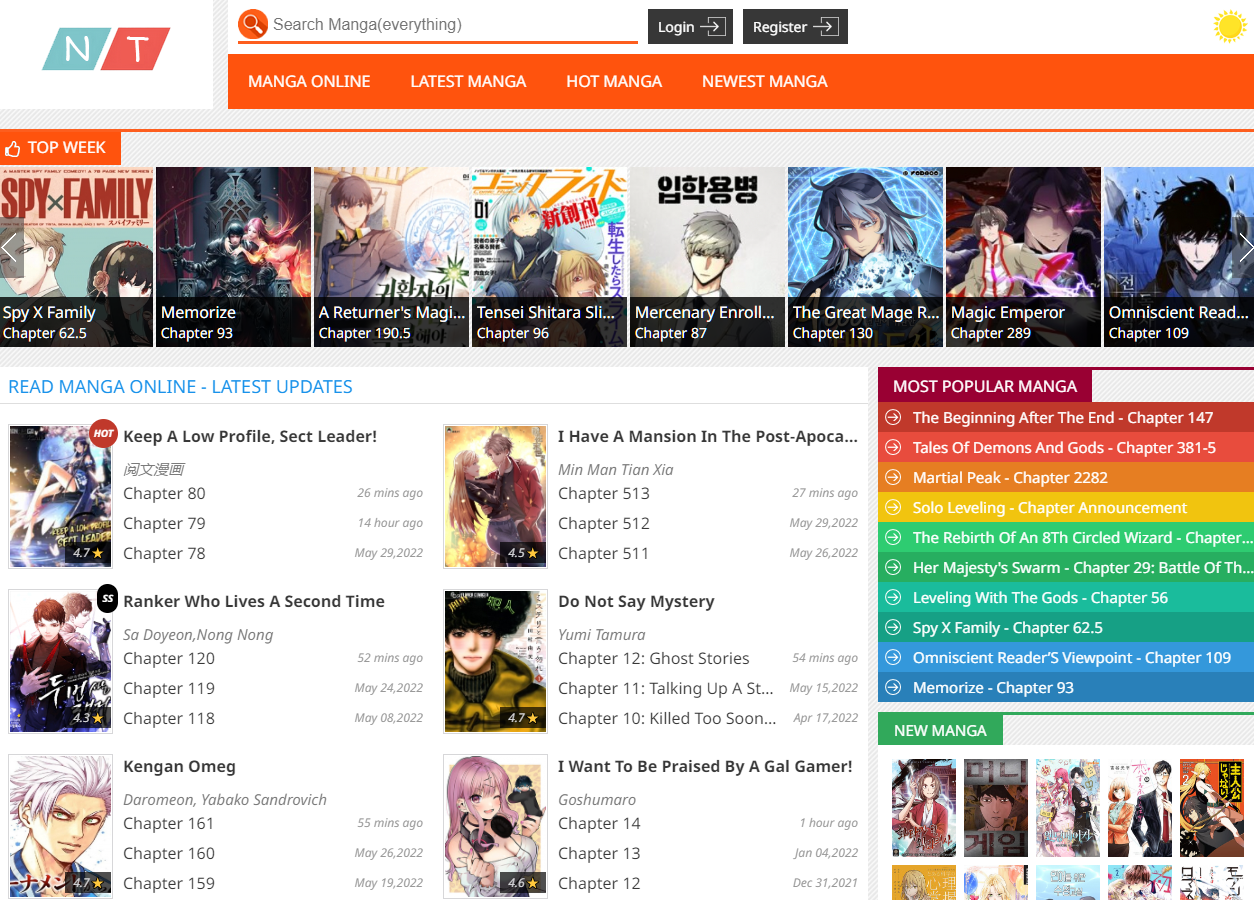🌟 Dịch Vụ Chất Lượng Cao 🌟
✓ 301 Redirect: Chuyển hướng domain an toàn, giữ nguyên giá trị SEO
✓ Guest Post: Đăng bài chất lượng trên các website uy tín
✓ Hỗ trợ tư vấn 24/7
✓ Báo giá cạnh tranh
✓ Thời gian xử lý nhanh chóng
📱 Liên hệ ngay qua Telegram: @subdomaingov
⚡ Hỗ trợ tư vấn miễn phí
Happiness Of The The Holy Maiden’s Fresh Start
₫2.599.428
Happiness Of The The Holy Maiden’s Fresh Start -: The Best Way to Enjoy Your Favorite Titles
Product description
Unfolding the Pages of Manga Summary Clover (Chiya Toriko) - A Journey into an Enchanting Story
In the rich world of manga, Clover (Chiya Toriko) stands out as a remarkable narrative that captivates readers with its unique characters and intricate storytelling. This article provides an in-depth Manga summary Clover (Chiya Toriko), allowing fans and new readers alike to dive deeper into its themes, character development, and artistry.
Exploring the World of Clover
The setting and environment in a manga often play a crucial role in establishing the mood and tone of the story. In Clover, the backdrop is designed to complement the narrative's emotional depth, providing readers an immersive experience.
Creating a Magical Realm
One of the most compelling aspects of Clover is its beautifully crafted world that blends fantasy elements with relatable human emotions. The landscapes range from lush forests to bustling towns, each meticulously illustrated to enhance the narrative.
This magical realm mirrors the protagonist’s internal struggles and dreams. For readers, it becomes not just a setting but a character in itself. The fantastical elements allow for imaginative exploration, leading to surprising twists. As new locations are introduced, they bring fresh challenges and adventures for the characters, enriching the storyline.
Character Dynamics in Clover
The interactions between characters create a complex tapestry that drives the story forward. From friendships to rivalries, these relationships breathe life into Clover. The protagonist’s journey is deeply intertwined with other characters' developments, crafting a multi-dimensional narrative.
Character dynamics also reflect broader themes such as friendship, love, and personal growth. Each relationship adds layers to the story, allowing readers to experience the highs and lows alongside the characters. The intricate dance of alliances and conflicts enhances emotional engagement, making readers root for their favorites.
Symbolism and Themes
- Clover* is not just a tale of adventure; it subtly weaves profound themes that resonate on multiple levels. Symbols scattered throughout the narrative deepen the readers' understanding of the unfolding drama, inviting analysis and interpretation.
The recurring motifs of nature, fate, and resilience serve as reminders of the tenacity of the human spirit. Through the protagonist's journey, readers are encouraged to reflect on their own lives, choices, and the impact of their actions on others. The manga's thematic richness elevates it beyond mere entertainment, prompting contemplation and discussion among its audience.
Protagonist Analysis: The Heart of Clover
At the center of Clover lies a well-crafted protagonist whose growth embodies the essence of the story. Understanding this character's journey is crucial for appreciating the manga fully.
Crafting a Relatable Heroine
The main character in Clover serves as a relatable figure for readers, facing trials that mirror common struggles like identity, belonging, and self-acceptance. Her evolution throughout the series encourages readers to empathize with her experiences, fostering a strong emotional connection.
As she navigates her challenges, moments of vulnerability make her relatable and human. These imperfections highlight the beauty of growth and change, ultimately inspiring readers to confront their own obstacles with courage.
Growth Through Adversity
A significant theme in Clover is the idea of growth through adversity. The protagonist's journey is rife with difficulties that test her resolve and character. Each challenge propels her toward self-discovery and empowerment, reinforcing the notion that obstacles can lead to personal strength.
Through confrontation with foes and the unraveling of her own fears, she learns valuable lessons about trust, love, and sacrifice. These experiences shape her into a multidimensional character who evolves not just physically but emotionally and spiritually. Readers witness her transformation, creating a compelling arc that resonates with universal experiences of hardship and triumph.
Supporting Characters That Enrich the Narrative
While the protagonist shines brightly at the center of Clover, the supporting characters significantly enrich the narrative. Each plays a vital role in shaping the protagonist's journey, providing varied perspectives and insights.
The relationships formed with these characters introduce additional layers of conflict and support. Friendships provide solace, while rivalries fuel motivation. As the protagonist interacts with each supporting character, readers gain deeper insight into their personalities and backgrounds, creating a more vibrant backdrop for the main story.
Artistic Style and Its Impact
Another essential aspect of Clover is its artistic style, which not only captures the essence of the narrative but also amplifies emotional resonance. The artwork serves as a powerful tool to convey feelings and moods.
Illustrative Techniques That Captivate
The manga employs various illustrative techniques that add depth to the storytelling. Detailed backgrounds contrast with expressive character designs, engaging readers visually. The use of color, shading, and line work creates a dynamic experience, evoking emotions that align with the narrative.
Moments of action are depicted with intense energy, while softer scenes utilize gentle lines to create a sense of calm. This balance of styles enhances the overall impact of the story, allowing readers to experience both excitement and tranquility.
Visual Storytelling Beyond Words
In Clover, visual storytelling takes precedence, enabling the narrative to communicate themes effectively without the need for extensive dialogue. Facial expressions, body language, and scene composition play critical roles in conveying emotions and intentions.
Readers find themselves immersed in the flow of the story as they absorb visual cues alongside the written word. This synergy between art and narrative fosters a deeper understanding of character motivations and plot developments, making every panel a vital piece of the puzzle.
Color Usage and Symbolism
The strategic use of color within Clover enhances thematic elements and character expressions. Different hues symbolize specific emotions or states of being, guiding readers toward important undertones. For instance, warm colors might signify safety and love, while cooler tones could indicate despair or tension.
This thoughtful application of color transforms reading into a sensory experience, allowing readers to connect with the characters on a visceral level. By engaging both the mind and heart, the manga leaves a lasting impression, encouraging reflection long after the final page is turned.
The Lasting Influence of Clover on Manga Culture
Clover has made its mark in the realm of manga, influencing both creators and audiences. Its legacy continues to shape the landscape of storytelling in this medium.
Inspiring Future Works
The themes and storytelling methods found in Clover pave the way for future manga artists. By integrating fantasy with deeply human emotions, it sets a standard for creating narratives that resonate universally. New artists take inspiration from its character development, world-building, and thematic exploration.
These elements encourage creativity and innovation within the manga community. As budding authors strive to capture similar emotional depth and complexity, they contribute to a richer, more diverse array of stories.
Fan Community and Engagement
The impact of Clover extends beyond its pages, cultivating a robust fan community. Enthusiasts engage in discussions, analysis, and fan art, further enhancing appreciation for the work. Social media platforms have become arenas for sharing interpretations and celebrating the narrative.
The shared passion among fans strengthens connections over shared interests, often leading to collaborations that explore aspects of the story in exciting ways. This community-driven engagement fosters a sense of belonging, making the world of Clover a shared experience that transcends borders and cultures.
Cultural Relevance and Adaptation
As Clover continues to resonate with audiences, its cultural relevance prompts adaptation into various formats, including anime and merchandise. Such adaptations expand its reach, introducing the story to those who may not typically read manga.
These adaptations present opportunities to reinterpret the original work, potentially attracting new generations of fans. As the story gains visibility across different mediums, its core messages of resilience and hope remain potent, ensuring its place in the canon of beloved manga.
FAQs About Clover
What is Clover about?
Clover follows the journey of a young protagonist navigating a fantastical world filled with adventure, friendships, and inner conflicts. The story explores themes of growth, resilience, and the search for identity.
Who is the author of Clover?
Clover is created by Chiya Toriko, renowned for her ability to blend enchanting visuals with deep emotional narratives, resulting in compelling storytelling.
Are there any significant themes in Clover?
Yes, Clover delves into various themes such as friendship, self-discovery, and the power of overcoming adversity. It invites readers to reflect on their own experiences and personal growth.
How does the artwork influence the story in Clover?
The artistic style of Clover enhances emotional resonance and conveys themes effectively. Visual storytelling complements the narrative, allowing readers to connect with characters on a deeper level beyond words.
Is Clover recommended for newcomers to manga?
Absolutely! Clover offers a captivating introduction to the manga world with its engaging story, relatable characters, and stunning artwork, making it accessible and enjoyable for newcomers.
Conclusion
In conclusion, Clover (Chiya Toriko) presents an extraordinary journey that intertwines fantasy with the complexities of human emotion. Through immersive world-building, relatable character arcs, and striking artistic techniques, it paints a vivid portrait of life's challenges and triumphs. As a narrative that resonates on multiple levels, Clover invites readers to reflect on their own paths, drawing inspiration from its themes of resilience and hope. This comprehensive Manga summary Clover (Chiya Toriko)
Read Full: Adored By The Beast That Killed The King







